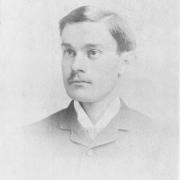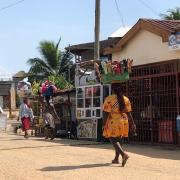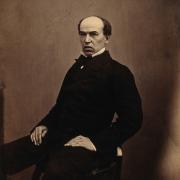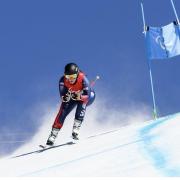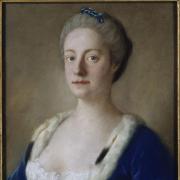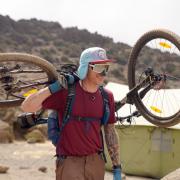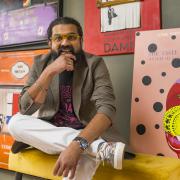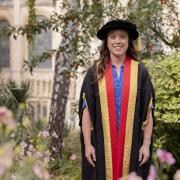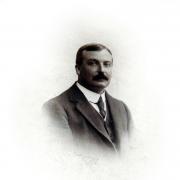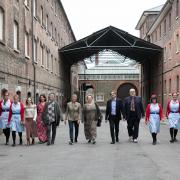In the digital age, it’s good to know there are still skilled crafts being done by hand. Meet four Kent craftspeople keeping traditional methods alive

• The woodcarver
Will Barsley
William Barsley Bespoke Woodcarving, Matfield
I first started carving as a release from my office job. For me, there is nothing better than being completely in the moment with nothing but a chisel, mallet, and beautiful piece of wood, and my hands free to create the design that’s in my head.
I previously worked for the United Nations Food and Agricultural Organisation in Rome. In 2014, I took a leap of faith and left my job, setting off to explore and document woodcarving around the world in a project called Carving Countries.
This journey proved life-changing, opening my eyes to the incredible diversity of carving around the world. Importantly, it also gave me the desire to learn about my own country’s carving traditions, and to turn my hobby into a career.
I enrolled onto one of the best carving courses in Europe - a three-year diploma in Historic Ornamental Woodcarving and Gilding at the City and Guilds of London Art School, from which I’ve just graduated.
I grew up in the heart of the Kent, surrounded by beautiful oast houses and hop fields, and have always felt these iconic symbols of Kent to be part of my identity. As part of my final year, I carved an ornamental wreath of hops. My dream is to revive hops as a carved ornament, whether that’s in stand-alone sculptures, decorative features, or everyday items such as mirrors.

Since finishing my training, I have begun carving at Westminster Hall in the Houses of Parliament for a Kent-based company called Dolmen Conservation. Alongside this work, I continue to carve private commissions, which are increasingly centred around hops.
Keeping traditional crafts such as woodcarving alive in the 21st century is incredibly important. It feels as though there has been a real resurgence in the last few years of interest in handmade objects and of learning traditional skills. I’ve no doubt this trend will continue over the coming years.
Visit www.williambarsley.com
• The spinner

Della Newman
Spinning Earth and Wye Community Farm, Wye
I am a director of the Wye Community Farm project, where we harvest award-winning fleeces from our rare breed sheep. This is sorted and graded, washed, picked open and carded or brushed to form a big fluffy batt. It is only when all these processes are complete that the spinning begins.
Hand-spun yarns are unique; each fleece will have different characteristics and spinners can choose to work with this in their own creative way. On my trade stalls I normally display a traditional spinning wheel so that people can relate to the actual equipment I use.
Throughout my childhood my mother was an avid knitter and passionate about the countryside. One year at the Kent County Show I saw a lady demonstrating spinning wool and remember sinking my hands into the big fluffy fleece. She let me have a go and that was it - I had to do this! At age 12 I saved up for my first spinning wheel.
I am developing the label, Spinning Earth, creating a range of small items - hats, fingerless mittens, scarves and socks - alongside my Merlin tunic tops. Within Wye Community Farm we are also developing a range of courses; spinning, weaving and felt making courses.
The Woolshed is a mini woollen mill where Wye Community Farm are turning our fleeces into felted fabric and batts for spinners. We have secured LEADER funding to adapt a farm building for this project, as well as install the vital equipment.
I am very interested in presenting and evolving this ancient craft into the modern world by attracting young people, engaging with local colleges and raising an online profile. By working collaboratively through our farming project we are gradually amassing the skills base to help with this.
Visit www.spinningearth.co.uk

• The oast cowl restorer

Darren Hole
Dude & Arnette, Maidstone
If you drive around Kent and Sussex you will see unusual-looking round buildings with conical roofs. These are called kilns and on the top should be an oast cowl, the white point designed to draw air up through the kiln to dry hops.
Having trained as a mechanic, I met David Holmes from Holmes Builders in 1987 and we got on famously. I then started working at weekends for him, putting the cowls up by hand with rope pulleys and poles.
After doing this for a couple of years - and in the meantime getting married to his daughter Mandy - he decided it would be a good idea for me to be there full time. When David retired we closed his original business, creating Dude & Arnette in its place.
Our most common job on oast cowls is refurbishment. They need taking down every five to six years, stripping down and repainting. We strip all the paint from the boards, replacing any cracked or rotten boards. The cowl then gets dried and treated and then it gets five coats of paint and sealed between all the boards. Then we refit the cowl to rotate.
We still paint the cowls by hand. We tried spraying but because of the shape of the cowl it’s almost impossible to get good coverage, so we use tried and tested methods. We move with the changes in paint and wood treatment technology but I think construction will always have to be done by hand.
We’ve been working on the Hop Farm for years now and they are committed to putting it back as it was originally. We have a programme at the moment, going from bell to bell refurbishing the cowls and sorting out the tiles. It’s an ongoing project which we are proud to be involved in.
I have four great chaps on the team; my son Brandon, Zac, Scott and Glyn. They are all passionate about their work and have experienced all aspects of the oast world. Hopefully they will keep the future of cowling safe for many years to come.

Visit www.dudeandarnette.co.uk
• The blacksmith

Rhys Harlin
Darenth Valley Forge, Eynsford
I have always had an interest in medieval history and I suppose a lot of inspiration came from that. Almost every medieval film has a shot of a blacksmith, and it always looked like an interesting job to me.
So I undertook my Year 10 work experience with Godfrey South, the former owner of Darenth Valley Forge. The work experience led to a Saturday job, which eventually led to me taking over the company when Mr South moved to Canada.
Since taking over the forge I have competed in and won many awards and competitions. In 2016 I won the National Blacksmiths Championship and was also awarded the title of AWCB (Associate of the Worshipful Company of Blacksmiths).
My work ranges from general repairs to bespoke gates and railings, to high-end bespoke furniture. I recently undertook work for a public art installation of two forged RAF memorial benches which can be seen at Cascades Leisure Centre in Gravesend.
Working in traditional and contemporary designs, I use both ancient and modern methods: fire welding, mortise and tenon joints, riveting and collars are jointing methods which have been used since the beginning and still are used today in the forge. Although there is still room for modern methods such as mig/tig welding. Using a range of methods I am able to create interesting, bespoke items to suit each individual.
There are still many younger people coming into the craft. I myself am only 24 years old and have been forging since the age of 15. However you start, like everything, it’s all down to practice and repetition. Blacksmithing isn’t just traditional iron scrollwork, it’s in everyday life from architectural iron work to sculptures.






